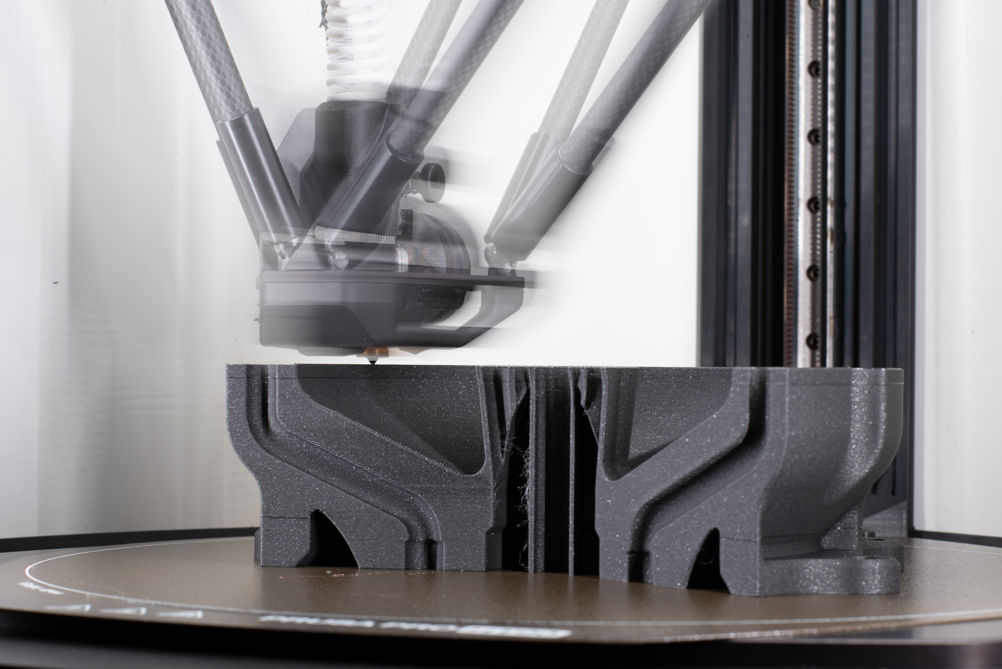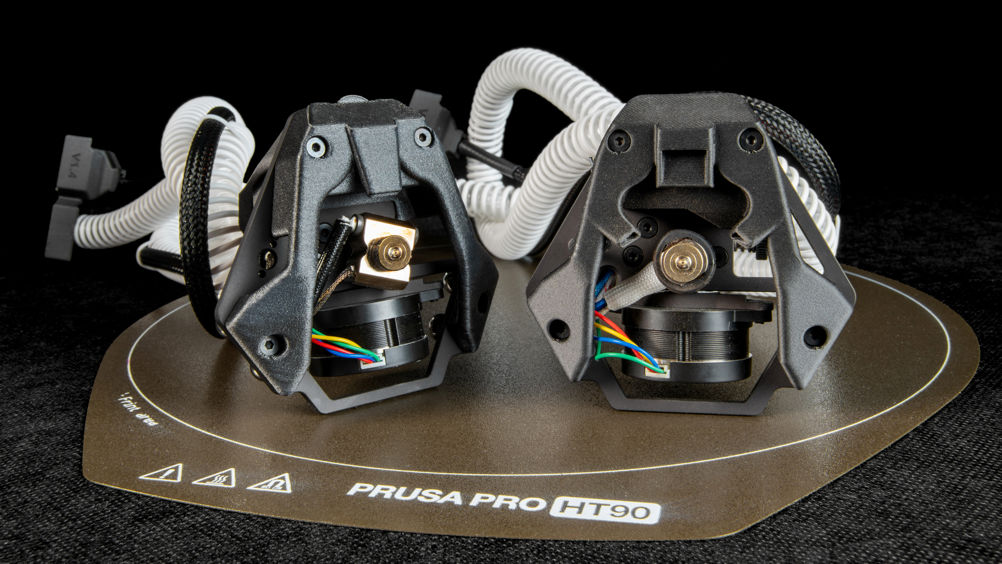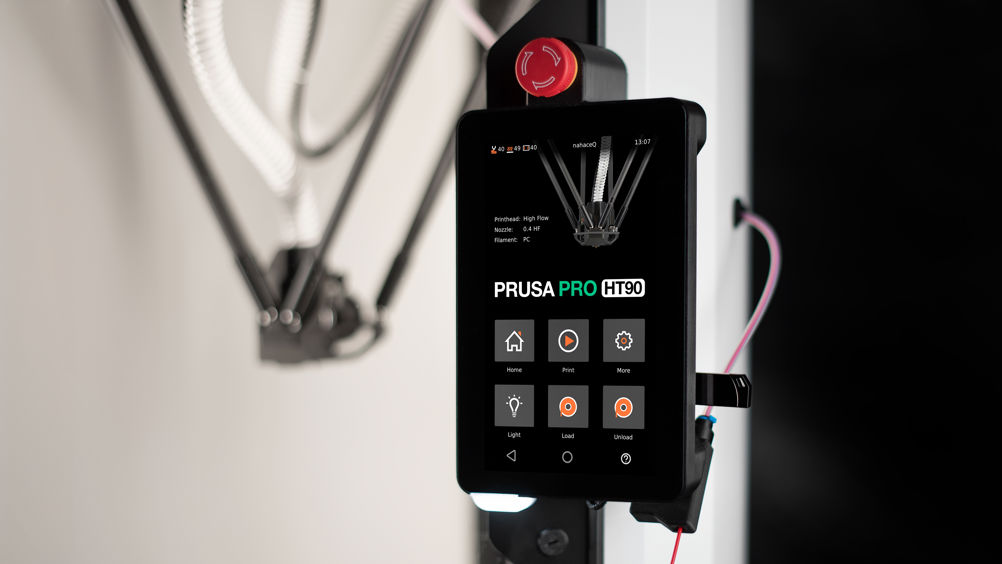First founded as a one-man start-up in 2012 by Josef Prusa, Prusa Research is now one of the biggest names in the Additive Manufacturing space.
Despite starting from humble beginnings – shipping 3D printer parts in pizza boxes from Josef’s small basement workshop – the company now employs over 700 people and ships more than 9000 printers worldwide, directly from its HQ in Prague each month.
The company’s i3 design, for instance, is now one of the most popular Fused Deposition Modelling (FDM) printer designs out there, for manufacturers and hobbyists alike.
This is, in part, due to Prusa’s open-source nature and mission to ‘make enjoyable machines for everyone’ – but also its commitment to continually push the bounds of its machines.
“We believe the future for Prusa is bright,” Rudolf Krcmar, CMO at Prusa Research, told Machinery. “This year, we started shipping our advanced industrial printer, the HT90, and the interest has positively surprised us. Recently, we introduced a significant upgrade to our main seller, the MK4. The MK4S now offers improved speed and quality using a high-flow nozzle and an enhanced, redesigned 360° cooling system.
“Our main focus continues to be developing the best B2C printers on the market. At the same time, we aim to expand our Prusa Pro series, allowing us to work with more advanced technologies that we can later bring to the B2C market.”

For all of its customers, the company has recently developed its HT90 industrial printer, targeted at a wide range of applications, from small productions to rapid prototyping in large organisations.
As such, Prusa believes this printer to be ‘the only 3D printer an engineer will need.’ The HT90 can create PLA protypes in record timing, the company said, and its users can get the best performance out of high-temperature materials like PCCF or PA11CF thanks to an actively heated chamber capable of reaching 90 °C.
“What sets the HT90 apart is that it offers a complete package. Start prototyping with PLA or PETG, and then move on to final prototypes or products in high-performance materials like ASA and PC, all printed with excellent quality. For parts requiring high wear resistance, such as cogwheels or blades, you can even use materials like PEI and PEEK,” explained Krcmar.
“We also cater to the needs of large industrial companies that already use MK and XL printers, who are seeking a more advanced machine that is compatible with PrusaSlicer and PrusaConnect.”
The printer features a unique cooling solution that Prusa Research developed in-house. According to the company, standard ventilation takes approximately three seconds to reach full speed. Users can, of course, run the fan at full speed, but this comes with some limitations to printability and properties of the end model.
Prusa’s solution, with a constantly pressurised hose and servo flap, adjusts airflow in just 0.2 seconds – a crucial innovation for fast printing.

“While delta printers can be incredibly fast, speed alone isn't enough; you also need sufficient airflow and cooling,” Krcmar said. “We've addressed flow with high-flow nozzles, and our unique cooling system enables instant variable cooling. Traditional fans can't match this, as the delay in reaching full speed would mean the printer has already moved on to the next step.”
What’s more, the HT90 comes with two specialised direct-drive print heads: the High Flow Print head – designed for high-flow fast printing with innovative cooling and which supports materials such as PLA, ASA, PETG, FLEX, and more – and the High Temp head – which focuses on high-temperature materials like PEI (Ultem), PEEK, PEKK, PPSU, amongst others.
According to Krcmar, the printer can “handle materials like PC and ASA exceptionally well. Even with a 0.4 mm nozzle, the details are so good, they look like PLA. For PEEK and PEKK, there are some limitations due to the maximum chamber temperature of 90°C, but it can still manage small to medium-sized prints depending on the geometry.”
Due to its versatility, applications for the HT90 are wide, ranging from the aerospace industry, in which customers are printing small PEEK-CF/PEI-CF parts that can be certified to stay installed in a plane, to manufacturers across virtually all industries undertaking rapid prototyping with PLA.
“PETG jigs and mod to industrial manufacturing lines, ergonomic mods for workers and their work stations again in the manufacturing warehouses, ASA electronics boxes that survive prolonged UV exposure. The list is endless. Every customer is different and the HT90 is simply a tool that enables time and cost effective ways to achieve their goals,” added Krcmar.
“Security is also a top priority for the HT90, as we expect customers from aerospace, military, and similar industries. The printer is designed to operate fully offline, including slicing, profiles, and all operations. Even the Wi-Fi model uses a USB connection that can be easily removed for added security. We've ensured complete peace of mind in terms of data protection.”

The response and interest from across industry has been very positive, Prusa Research said, even after just a few months of sales. The company has even received letters from users praising the printer, which it said is testament to the talent of its development team and overall company drive to innovate and stay ahead in the industry.
“Innovation has always been the bread and butter of Prusa. While we've managed to design the highly affordable professional HT90, price is never our main focus. Our goal is to build the best 3D printers, known for exceptional print quality, reliability, security, and trustworthiness,” said Krcmar.
And as for the company’s future: “Prusa Research will continue focusing on offering the best B2C printers, but our portfolio will expand into broader areas, including advanced solutions,” he added.
“We believe 3D printing will reach broader audiences, from more homes to sophisticated 3D farming. For example, we are finishing our Automated Farm System (AFS), which is already attracting significant interest. We’re committed to staying at the forefront of 3D printing by continually evolving our products.”










